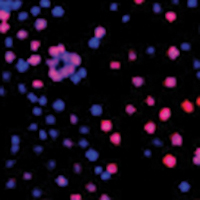 Smart Citations
Smart CitationsSee how this article has been cited at scite.ai
scite shows how a scientific paper has been cited by providing the context of the citation, a classification describing whether it supports, mentions, or contrasts the cited claim, and a label indicating in which section the citation was made.
miRNA-877-5p inhibits malignant progression of prostate cancer by directly targeting SSFA2
In this study, we aimed to investigate the role of miR-877-5p in the malignant phenotypes of prostate cancer (PCa) cells and its underlying mechanism. RT-qPCR analysis was performed to examine the expression of miR-877-5p and sperm-specific antigen 2 (SSFA2) in PCa tissues and cells. Cell counting kit-8 (CCK-8) assay, 5-ethynyl-20-deoxyuridine (EdU) assay, flow cytometry, wound-healing assay, and Transwell invasion assay were performed to determine the functional roles of miR-877-5p in PCa cells. The association of miR-877-5p with SSFA2 was determined by luciferase reporter and RNA pull-down assays. In this study, we found that the expression level of miR-877-5p was decreased in PCa tissues and cells. Functionally, overexpression of miR-877-5p exerted tumor suppressor properties in PCa cells. Mechanistically, SSFA2 was identified as a target gene of miR-877-5p, while overexpression of SSFA2 could abrogate the anti-tumor effects of miR-877-5p in PCa cells. These findings demonstrated that miR-877-5p/SSFA2 axis functioned as a potential target for PCa treatment.
Downloads
Publication Facts
Reviewer profiles N/A
Author statements
- Academic society
- N/A
- Publisher
- PAGEPress Publications, Pavia, Italy
How to Cite

This work is licensed under a Creative Commons Attribution-NonCommercial 4.0 International License.
PAGEPress has chosen to apply the Creative Commons Attribution NonCommercial 4.0 International License (CC BY-NC 4.0) to all manuscripts to be published.

 https://doi.org/10.4081/ejh.2021.3243
https://doi.org/10.4081/ejh.2021.3243






